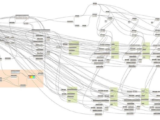
The Future of Autodesk and Bentley with AI: Revolutionizing Infrastructure Design
1 November 2024Table of Contents
The Future of Autodesk and Bentley with AI: Revolutionizing Infrastructure Design
As artificial intelligence (AI) advances, design industry giants like Autodesk and Bentley Systems are poised for transformation. The integration of AI into infrastructure design tools—such as AutoCAD, Revit, and OpenRoads—promises to revolutionize the way we create bridges, highways, and other critical structures. AI-powered design software could soon allow engineers to generate complex, optimized models simply by typing a prompt, driving efficiency and innovation to new heights.
How AI is Shaping the Future of Autodesk and Bentley Design Tools
Incorporating AI into design tools for Autodesk and Bentley allows engineers to tackle large-scale infrastructure projects with increased speed and precision. Instead of spending weeks on intricate plans, designers can now prompt the AI with specific parameters, enabling it to handle the bulk of technical design and engineering details. AI-powered tools can interpret descriptive text, providing customized models based on criteria such as structural integrity, environmental impact, and materials, ensuring that projects align with real-world constraints and regulations.
Generative Design: The Key to AI-Driven Infrastructure Projects
At the heart of this revolution is Generative Design, an AI-based feature that allows Autodesk and Bentley users to explore thousands of design alternatives in seconds. For example, a prompt like “create a four-lane highway bridge with sustainable materials” will lead the AI to propose optimized layouts, material requirements, and even cost-effective solutions. This generative design process enables project teams to compare design scenarios and select the best option for their specific goals, saving time and reducing errors.
Practical AI Applications in Bridge and Highway Design
Imagine needing a bridge designed to support both high traffic loads and environmental sustainability. With an AI-driven tool, the engineer could simply input the desired specifications, and the software would generate a detailed model complete with load calculations, safety factors, and material recommendations. Similarly, for highway projects, AI can suggest ideal routes and alignments by analyzing topography, traffic flow, and environmental data—maximizing efficiency and minimizing construction costs.
Benefits of AI in Autodesk and Bentley Systems for Infrastructure Design
AI’s integration into Autodesk and Bentley’s platforms offers several game-changing advantages:
- Enhanced Efficiency: AI dramatically reduces the time needed to create complex designs, freeing engineers to focus on refining concepts.
- Improved Precision: By analyzing massive amounts of data, AI ensures designs meet regulatory and safety standards more consistently.
- Sustainability: Generative design can identify environmentally friendly options, reducing material use and overall project impact.
- Cost Savings: By optimizing resources and reducing manual labor, AI lowers design and construction costs.
The Future: An AI-Powered Transformation of Infrastructure Design
AI’s integration with Autodesk and Bentley platforms is only beginning. As the technology continues to learn from real-world project data, it will become even more accurate and capable of tackling increasingly complex infrastructure challenges. This will not only change how we approach infrastructure projects but also who can contribute to these fields. With AI as a partner in design, engineering teams can prioritize innovation and sustainability, ultimately leading to smarter, safer, and more resilient structures.
The future of AI in Autodesk and Bentley points to a new era where infrastructure design is not only faster and more efficient but also aligns closely with evolving environmental and economic goals.








